Hematite
A valid IMA mineral species - grandfathered
This page kindly sponsored by IHO: Dr. Peter J Heaney
About Hematite
Formula:
Fe2O3
Colour:
Steel-grey to black in crystals and massively crystalline ores, dull to bright "rust-red" in earthy, compact, fine-grained material.
Lustre:
Metallic, Sub-Metallic, Dull, Earthy
Hardness:
5 - 6
Specific Gravity:
5.26
Crystal System:
Trigonal
Member of:
Name:
Originally named about 300-325 BCE by Theophrastus from the Greek, "αιματίτις λίθος" ("aematitis lithos") for "blood stone". It is possibly the first mineral ever named ending with a "-ite" suffix. Translated in 79 by Pliny the Elder to haematites, "bloodlike", in allusion to the vivid red colour of the powder. The modern form evolved by authors frequently simplifying the spelling by excluding the "a", somewhat in parallel with other words originally utilising the root "haeme".
Polymorph of:
Hematite Group. The iron analogue of Corundum, Eskolaite, and Karelianite.
Hematite is rather variable in its appearance - it can be in reddish brown, ocherous masses, dark silvery-grey scaled masses, silvery-grey to black crystals, and dark-grey masses, to name a few. What they all have in common is a rust-red streak.
Black crystals may be confused with ilmenite.
NOTE: The 'hematite' used in jewelry, and often sold as magnetized items, is nothing of the sort and is an artificially created material, see Magnetic Hematite.
In an experimental volcanic gas condensation by Africano et al. (2002), it deposited in high fO2 conditions during cooling from ca. 800°C down to ca. 650°C.
 Visit gemdat.org for gemological information about Hematite.
Visit gemdat.org for gemological information about Hematite.
Hematite is rather variable in its appearance - it can be in reddish brown, ocherous masses, dark silvery-grey scaled masses, silvery-grey to black crystals, and dark-grey masses, to name a few. What they all have in common is a rust-red streak.
Black crystals may be confused with ilmenite.
NOTE: The 'hematite' used in jewelry, and often sold as magnetized items, is nothing of the sort and is an artificially created material, see Magnetic Hematite.
In an experimental volcanic gas condensation by Africano et al. (2002), it deposited in high fO2 conditions during cooling from ca. 800°C down to ca. 650°C.
 Visit gemdat.org for gemological information about Hematite.
Visit gemdat.org for gemological information about Hematite.Unique Identifiers
Mindat ID:
1856
Long-form identifier:
mindat:1:1:1856:8
GUID
(UUID V4):
(UUID V4):
9258aa6e-d71d-4183-8b5b-ffda915468a6
IMA Classification of Hematite
Approved, 'Grandfathered' (first described prior to 1959)
Classification of Hematite
4.CB.05
4 : OXIDES (Hydroxides, V[5,6] vanadates, arsenites, antimonites, bismuthites, sulfites, selenites, tellurites, iodates)
C : Metal: Oxygen = 2: 3,3: 5, and similar
B : With medium-sized cations
4 : OXIDES (Hydroxides, V[5,6] vanadates, arsenites, antimonites, bismuthites, sulfites, selenites, tellurites, iodates)
C : Metal: Oxygen = 2: 3,3: 5, and similar
B : With medium-sized cations
Dana 7th ed.:
4.3.1.2
4.3.1.2
4 : SIMPLE OXIDES
3 : A2X3
4 : SIMPLE OXIDES
3 : A2X3
7.20.4
7 : Oxides and Hydroxides
20 : Oxides of Fe
7 : Oxides and Hydroxides
20 : Oxides of Fe
Mineral Symbols
As of 2021 there are now IMA–CNMNC approved mineral symbols (abbreviations) for each mineral species, useful for tables and diagrams.
Please only use the official IMA–CNMNC symbol. Older variants are listed for historical use only.
Please only use the official IMA–CNMNC symbol. Older variants are listed for historical use only.
| Symbol | Source | Reference |
|---|---|---|
| Hem | IMA–CNMNC | Warr, L.N. (2021). IMA–CNMNC approved mineral symbols. Mineralogical Magazine, 85(3), 291-320. doi:10.1180/mgm.2021.43 |
| Hem | Kretz (1983) | Kretz, R. (1983) Symbols of rock-forming minerals. American Mineralogist, 68, 277–279. |
| Hem | Siivolam & Schmid (2007) | Siivolam, J. and Schmid, R. (2007) Recommendations by the IUGS Subcommission on the Systematics of Metamorphic Rocks: List of mineral abbreviations. Web-version 01.02.07. IUGS Commission on the Systematics in Petrology. download |
| Hem | Whitney & Evans (2010) | Whitney, D.L. and Evans, B.W. (2010) Abbreviations for names of rock-forming minerals. American Mineralogist, 95, 185–187 doi:10.2138/am.2010.3371 |
| Hem | The Canadian Mineralogist (2019) | The Canadian Mineralogist (2019) The Canadian Mineralogist list of symbols for rock- and ore-forming minerals (December 30, 2019). download |
| Hem | Warr (2020) | Warr, L.N. (2020) Recommended abbreviations for the names of clay minerals and associated phases. Clay Minerals, 55, 261–264 doi:10.1180/clm.2020.30 |
Pronunciation of Hematite
Pronunciation:
| Play | Recorded by | Country |
|---|---|---|
| Jolyon Ralph | United Kingdom |
Physical Properties of Hematite
Metallic, Sub-Metallic, Dull, Earthy
Transparency:
Opaque
Colour:
Steel-grey to black in crystals and massively crystalline ores, dull to bright "rust-red" in earthy, compact, fine-grained material.
Comment:
See Rossman, G. R. (1996) for cause of red colour.
Streak:
Reddish brown ("rust-red")
Hardness:
5 - 6 on Mohs scale
Hardness:
VHN100=1000 - 1100 kg/mm2 - Vickers
Hardness Data:
Measured
Tenacity:
Brittle
Cleavage:
None Observed
Parting:
Partings on {0001} and {1011} due to twinning. Unique cubic parting in masses and grains at Franklin Mine, Franklin, NJ.
Fracture:
Irregular/Uneven, Sub-Conchoidal
Comment:
Elastic in thin lamellae
Density:
5.26 g/cm3 (Measured) 5.255 g/cm3 (Calculated)
Optical Data of Hematite
Type:
Uniaxial (-)
RI values:
nω = 3.150 - 3.220 nε = 2.870 - 2.940
Max Birefringence:
δ = 0.280

Image shows birefringence interference colour range (at 30µm thickness)
and does not take into account mineral colouration.
and does not take into account mineral colouration.
Surface Relief:
Very High
Anisotropism:
Distinct
Reflectivity:
| Wavelength | R1 | R2 | imR1 | imR2 |
|---|---|---|---|---|
| 400nm | 26.8% | 30.5% | 12.2% | 15.6% |
| 420nm | 28.5% | 31.8% | 13.9% | 17.0% |
| 440nm | 28.9% | 32.1% | 14.3% | 17.3% |
| 460nm | 28.2% | 31.9% | 13.6% | 17.0% |
| 470nm | 28.1% | 31.7% | 13.4% | 16.8% |
| 480nm | 27.9% | 31.6% | 13.3% | 16.7% |
| 500nm | 27.5% | 31.3% | 12.9% | 16.3% |
| 520nm | 27.2% | 30.5% | 12.6% | 15.6% |
| 540nm | 26.7% | 30.1% | 12.2% | 15.3% |
| 546nm | 26.4% | 30.0% | 12.0% | 15.1% |
| 560nm | 26.1% | 29.8% | 11.8% | 15.0% |
| 580nm | 25.5% | 29.3% | 11.3% | 14.6% |
| 600nm | 24.8% | 28.6% | 10.8% | 14.0% |
| 620nm | 24.1% | 27.7% | 10.3% | 13.2% |
| 640nm | 23.6% | 26.7% | 9.9% | 12.4% |
| 650nm | 23.3% | 26.3% | 9.7% | 12.0% |
| 660nm | 23.0% | 25.9% | 9.5% | 11.7% |
| 680nm | 22.6% | 25.3% | 9.2% | 11.2% |
| 700nm | 22.3% | 25.1% | 9.0% | 11.1% |
Graph shows reflectance levels at different wavelengths (in nm). Top of box is 100%. Peak reflectance is 32.1%.
R1 shown in black, R2 shown in red, imR1 shown in green, imR2 shown in blue
Colour in reflected light:
White to greyish white with bluish tint
Internal Reflections:
Red
Pleochroism:
Weak
Comments:
O = brownish red
E = yellowish red
E = yellowish red
Chemistry of Hematite
Mindat Formula:
Fe2O3
Elements listed:
Common Impurities:
Ti,Al,Mn,H2O
Age distribution
Recorded ages:
Mesozoic : 236 ± 7 Ma to 145 ± 4 Ma - based on 5 recorded ages.
Chemical Analysis
Oxide wt%:
| 1 | 2 | |
|---|---|---|
| Fe2O3 | 87.0 % | 86.95 % |
| MnO2 | 2.5 % | 2.93 % |
| SiO2 | 5.0 % | 8.20 % |
| Al2O3 | 2.0 % | 0.73 % |
| Loss | 3.5 % | 1.19 % |
| Total: | 100 % | 100 % |
Sample references:
| ID | Locality | Reference | Notes |
|---|---|---|---|
| 1 | Bihain, Vielsalm, Luxembourg, Wallonia, Belgium | ||
| 2 | Colanhan, Lierneux, Liège, Wallonia, Belgium | " " |
Crystallography of Hematite
Crystal System:
Trigonal
Class (H-M):
3m (3 2/m) - Hexagonal Scalenohedral
Space Group:
R3c
Cell Parameters:
a = 5.038(2) Å, c = 13.772(12) Å
Ratio:
a:c = 1 : 2.734
Unit Cell V:
302.72 ų (Calculated from Unit Cell)
Z:
6
Morphology:
Crystals generally thick to thin tabular {0001}, rarely prismatic [0001] or scalenohedral; also rarely rhombohedral {1011}, producing pseudo-cubic crystals. Often found in sub-parallel growths on {0001} or as rosettes ("iron roses.") Sometimes in micaceous to platy masses. May be compact columnar or fibrous masses, sometimes radiating, or in reniform masses with a smooth fracture ("kidney ore"), and botryoidal and stalactic. Frequently in earthy masses, also granular, friable to compact, concretionary and oolitic.
Twinning:
Penetration twins on {0001}, or with {1010} as a composition plane. Frequently exhibits a lamellar twinning on {1011} in polished section.
Crystallographic forms of Hematite
Crystal Atlas:
Image Loading
Click on an icon to view
3d models and HTML5 code kindly provided by
www.smorf.nl.
Toggle
Edge Lines | Miller Indices | Axes
Transparency
Opaque | Translucent | Transparent
View
Along a-axis | Along b-axis | Along c-axis | Start rotation | Stop rotation
Toggle
Edge Lines | Miller Indices | Axes
Transparency
Opaque | Translucent | Transparent
View
Along a-axis | Along b-axis | Along c-axis | Start rotation | Stop rotation
Crystal Structure
Load
Unit Cell | Unit Cell Packed
2x2x2 | 3x3x3 | 4x4x4
Unit Cell | Unit Cell Packed
2x2x2 | 3x3x3 | 4x4x4
Show
Big Balls | Small Balls | Just Balls | Spacefill
Polyhedra Off | Si Polyhedra | All Polyhedra
Remove metal-metal sticks
Big Balls | Small Balls | Just Balls | Spacefill
Polyhedra Off | Si Polyhedra | All Polyhedra
Remove metal-metal sticks
Display Options
Black Background | White Background
Perspective On | Perspective Off
2D | Stereo | Red-Blue | Red-Cyan
Black Background | White Background
Perspective On | Perspective Off
2D | Stereo | Red-Blue | Red-Cyan
View
CIF File Best | x | y | z | a | b | c
CIF File Best | x | y | z | a | b | c
Rotation
Stop | Start
Stop | Start
Labels
Console Off | On | Grey | Yellow
Console Off | On | Grey | Yellow
Data courtesy of the American Mineralogist Crystal Structure Database. Click on an AMCSD ID to view structure
| ID | Species | Reference | Link | Year | Locality | Pressure (GPa) | Temp (K) |
|---|---|---|---|---|---|---|---|
| 0000143 | Hematite | Blake R L, Hessevick R E, Zoltai T, Finger L W (1966) Refinement of the hematite structure American Mineralogist 51 123-129 |  | 1966 | Elba, Italy | 0 | 293 |
| 0002228 | Hematite | Gualtieri A, Venturelli P (1999) In situ study of the goethite-hematite phase transformation by real time synchrotron powder diffraction American Mineralogist 84 895-904 |  | 1999 | 0 | 586 | |
| 0002229 | Hematite | Gualtieri A, Venturelli P (1999) In situ study of the goethite-hematite phase transformation by real time synchrotron powder diffraction American Mineralogist 84 895-904 |  | 1999 | 0 | 790 | |
| 0002230 | Hematite | Gualtieri A, Venturelli P (1999) In situ study of the goethite-hematite phase transformation by real time synchrotron powder diffraction American Mineralogist 84 895-904 |  | 1999 | 0 | 1052 | |
| 0017806 | Hematite | Maslen E N, Streltsov V A, Streltsova N R, Ishizawa N (1994) Synchrotron X-ray study of the electron density in alpha-Fe2O3 Acta Crystallographica B50 435-441 |  | 1994 | synthetic | 0 | 293 |
| 0017807 | Hematite | Maslen E N, Streltsov V A, Streltsova N R, Ishizawa N (1994) Synchrotron X-ray study of the electron density in alpha-Fe2O3 Acta Crystallographica B50 435-441 |  | 1994 | synthetic | 0 | 293 |
| 0017808 | Hematite | Maslen E N, Streltsov V A, Streltsova N R, Ishizawa N (1994) Synchrotron X-ray study of the electron density in alpha-Fe2O3 Acta Crystallographica B50 435-441 |  | 1994 | synthetic | 0 | 293 |
| 0017731 | Hematite | Finger L W, Hazen R M (1980) Crystal structure and isothermal compression of Fe2O3, Cr2O3, and V2O3 to 50 kbars Journal of Applied Physics 51 5362-5367 | 1980 | synthetic | 0.0001 | 293 | |
| 0017732 | Hematite | Finger L W, Hazen R M (1980) Crystal structure and isothermal compression of Fe2O3, Cr2O3, and V2O3 to 50 kbars Journal of Applied Physics 51 5362-5367 | 1980 | synthetic | 1.54 | 293 | |
| 0017733 | Hematite | Finger L W, Hazen R M (1980) Crystal structure and isothermal compression of Fe2O3, Cr2O3, and V2O3 to 50 kbars Journal of Applied Physics 51 5362-5367 | 1980 | synthetic | 3.14 | 293 | |
| 0017734 | Hematite | Finger L W, Hazen R M (1980) Crystal structure and isothermal compression of Fe2O3, Cr2O3, and V2O3 to 50 kbars Journal of Applied Physics 51 5362-5367 | 1980 | synthetic | 4.16 | 293 | |
| 0017735 | Hematite | Finger L W, Hazen R M (1980) Crystal structure and isothermal compression of Fe2O3, Cr2O3, and V2O3 to 50 kbars Journal of Applied Physics 51 5362-5367 | 1980 | synthetic | 4.39 | 293 | |
| 0017736 | Hematite | Finger L W, Hazen R M (1980) Crystal structure and isothermal compression of Fe2O3, Cr2O3, and V2O3 to 50 kbars Journal of Applied Physics 51 5362-5367 | 1980 | synthetic | 5.24 | 293 | |
| 0014076 | Hematite | Pauling L, Hendricks S B (1925) Crystal structures of hematite and corundum Journal of the American Chemical Society 47 781-790 | 1925 | 0 | 293 | ||
| 0018106 | Hematite | Pauling L, Hendricks S (1925) The Structure of Hematite Journal of the American Chemical Society 47 781-790 | 1925 | 0 | 293 |
CIF Raw Data - click here to close
Epitaxial Relationships of Hematite
Epitaxial Minerals:
| Rutile | TiO2 |
| Pseudobrookite | Fe2TiO5 |
Epitaxy Comments:
Examples of rutile epitaxial on hematite are widespread. Dramatic specimens have been found at Novo Horizonte, Brazil.
Pseudobrookite on hematite with pseudobrookite {121}[210] parallel to hematite {0001}[1100].
Pseudobrookite on hematite with pseudobrookite {121}[210] parallel to hematite {0001}[1100].
X-Ray Powder Diffraction
Image Loading
Radiation - Copper Kα
Data courtesy of RRUFF project at University of Arizona, used with permission.
Powder Diffraction Data:
| d-spacing | Intensity |
|---|---|
| 3.68 Å | (30) |
| 2.70 Å | (100) |
| 2.52 Å | (70) |
| 2.21 Å | (20) |
| 1.84 Å | (40) |
| 1.69 Å | (50) |
| 1.49 Å | (30) |
| 1.45 Å | (30) |
Geological Environment
Paragenetic Mode(s):
Geological Setting:
Large ore bodies of hematite are usually of sedimentary origin; also found in high-grade ore bodies in metamorphic rocks due to contact metasomatism, and occasionally as a sublimate on igneous extrusive rocks ("lavas") as a result of volcanic activity. It is also usually the cause of red soils all over the planet.
Synonyms of Hematite
Other Language Names for Hematite
Basque:Hematite
Catalan:Hematites
Croatian:Hematit
Czech:Hematit
Dutch:Hematiet
Esperanto:Hematito
Estonian:Hematiit
Finnish:Hematiitti
French:Hématite
Fer oligiste
Fer oxydé rouge
Hematite rouge
Fer oxydé (in part)
Titane oxydé ferrifère (in part)
Fer oligiste
Fer oxydé rouge
Hematite rouge
Fer oxydé (in part)
Titane oxydé ferrifère (in part)
Galician:Hematita
German:Hämatit
Anhydroferrit
Eisenglanz
Haematit
Haematites
Hematit
Jernglanz
Roteisenerz
Roteisenstein
Rotheisenstein
Rother Eisenrahm
Silbereisen
Speglande Eisenglimmer
Blutstein (in part)
Eisenniere (in part)
Anhydroferrit
Eisenglanz
Haematit
Haematites
Hematit
Jernglanz
Roteisenerz
Roteisenstein
Rotheisenstein
Rother Eisenrahm
Silbereisen
Speglande Eisenglimmer
Blutstein (in part)
Eisenniere (in part)
Greek:Αιματίτης
Hebrew:המטיט
Hungarian:Hematit
Italian:Ematite
Ematite rossa
Oligisto
Ematite rossa
Oligisto
Japanese:赤鉄鉱
Latin:Ochra rubra
Lithuanian:Hematitas
Norwegian:Hematitt
Polish:Hematyt
Portuguese:Hematite
Romanian:Hematit
Russian:Гематит
Simplified Chinese:赤铁矿
Slovak:Hematit
Swedish:Hematit
Blodsten
Haematites ruber
Järnmalm tritura rubra
Jernglans
Röd Jernmalm
Rödmalm
Speglande Jernmalm
Blodsten
Haematites ruber
Järnmalm tritura rubra
Jernglans
Röd Jernmalm
Rödmalm
Speglande Jernmalm
Traditional Chinese:赤鐵礦
Turkish:Hematit
Ukrainian:Гематит
Varieties of Hematite
| Alumohematite | Aluminian Hematite |
| Crucilite | Pseudomorphs of Hematite and/or Goethite after Arsenopyrite, named for cruciform shape of crystals. Originally described from Clonmel, Co. Waterford, Ireland. |
| Hydrohematite | Originally considered as a hydrated hematite, Fe2O3 x nH2O, based on specimens from Bavaria and Prussia having ~5 wt% H2O (Breithaupt, 1847). A crystal-structure study by Wolska (1981) showed the presence of OH groups and suggested the formula Fe2-x(OH)x... |
| Iridescent Hematite | An iridescent variety of specularite (hematite), its colour play caused by a very thin coating of nanoparticles of an unidentified aluminium phosphate (Nadin, 2007). |
| Iron Rose | A term used to describe rounded aggregates of tabular crystals. In these formations, the arrangement of the crystals somewhat reminds of the leaves in a rose blossom, hence the name. |
| Kidney Ore | A reniform (kidney-shaped) or botryoidal variety of hematite. The internal structure of the kidney-shaped nodules is usually concentric and radiating. |
| Manganese-bearing Hematite | |
| Martite | The name given for hematite pseudomorphs after magnetite, formed under conditions of increasing oxygen fugacity. For pseudomorphs of magnetite after hematite see "mushketovite". Originally described from Itabira, Minas Gerais, Southeast Region, Brazil... |
| Red Ochre | Earthy, reddish variety of hematite. Used as a natural red pigment. |
| Specularite | A variety of hematite characterized by aggregates of silvery, metallic, specular ("mirror-like") hematite flakes or tabular, anhedral crystals. |
| Stannian Cuprian Antimonian Hematite | The Tolbachik material has up to 2.6 wt.% Sb2O5. |
| Stannian Cuprian Hematite | The Tolbachik material has up to 9.2 wt.% SnO2 (maximum Sn content for natural hematite) and up to 4.7 wt.% CuO. |
| Titanohematite | Ti-bearing variety of hematite. |
Relationship of Hematite to other Species
Member of:
Other Members of this group:
| Corundum | Al2O3 | Trig. 3m (3 2/m) : R3c |
| Eskolaite | Cr2O3 | Trig. 3m (3 2/m) : R3c |
| Karelianite | V3+2O3 | Trig. 3m (3 2/m) : R3c |
| Tistarite | Ti3+2O3 | Trig. 3m (3 2/m) : R3c |
Common Associates
Associated Minerals Based on Photo Data:
| 4,852 photos of Hematite associated with Quartz | SiO2 |
| 2,490 photos of Hematite associated with Calcite | CaCO3 |
| 1,305 photos of Hematite associated with Rutile | TiO2 |
| 691 photos of Hematite associated with Goethite | α-Fe3+O(OH) |
| 678 photos of Hematite associated with Amethyst | SiO2 |
| 566 photos of Hematite associated with Fluorite | CaF2 |
| 552 photos of Hematite associated with Pyrite | FeS2 |
| 402 photos of Hematite associated with Magnetite | Fe2+Fe3+2O4 |
| 376 photos of Hematite associated with Smoky Quartz | SiO2 |
| 364 photos of Hematite associated with Dolomite | CaMg(CO3)2 |
Related Minerals - Strunz-mindat Grouping
| 4.CB. | Ferrohögbomite-2N2S | [(Fe2+,Mg,Zn,Al)3(Al,Ti,Fe3+)8O15(OH)]2 |
| 4.CB. | Magnesiohögbomite-6N12S | Mg5Al11TiO23(OH) |
| 4.CB. | Zhenruite | (MoO3)2 · H2O |
| 4.CB. | Pengite | (Pb8Sb3+3)Σ11Sb5+9O35 |
| 4.CB. | Virgilluethite | MoO3 · H2O |
| 4.CB.05 | Brizziite | NaSb5+O3 |
| 4.CB.05 | Corundum | Al2O3 |
| 4.CB.05 | Ecandrewsite | (Zn,Fe2+,Mn2+)TiO3 |
| 4.CB.05 | Eskolaite | Cr2O3 |
| 4.CB.05 | Geikielite | MgTiO3 |
| 4.CB.05 | Ilmenite | Fe2+TiO3 |
| 4.CB.05 | Karelianite | V3+2O3 |
| 4.CB.05 | Melanostibite | Mn2+2Fe3+Sb5+O6 |
| 4.CB.05 | Pyrophanite | Mn2+TiO3 |
| 4.CB.05 | Akimotoite | (Mg,Fe2+)SiO3 |
| 4.CB.05 | Auroantimonate | AuSbO3 |
| 4.CB.05 | UM1998-11-O-AuHSb | Au+2Sb3+O2(OH) |
| 4.CB.05 | Tistarite | Ti3+2O3 |
| 4.CB.05 | Unnamed (Fe-Cr Oxide) | FeCrO3 |
| 4.CB.05 | Hemleyite | (Fe2+0.48Mg0.37Ca0.04Na0.04Mn2+0.03Al0.03Cr3+0.01)sum=1.00Si1.00O3 |
| 4.CB.10 | Avicennite | Tl2O3 |
| 4.CB.10 | Bixbyite-(Mn) | Mn3+2O3 |
| 4.CB.10 | Bixbyite-(Fe) | (Fe,Mn)2O3 |
| 4.CB.15 | Armalcolite | (Mg,Fe2+)Ti2O5 |
| 4.CB.15 | Sassite | Ti3+2Ti4+O5 |
| 4.CB.15 | Pseudobrookite | Fe2TiO5 |
| 4.CB.15 | Ferropseudobrookite | Fe2+Ti2O5 |
| 4.CB.15 | Griffinite | Al2TiO5 |
| 4.CB.15 | Pseudobrookite Group | |
| 4.CB.20 | Zincohögbomite-2N2S | [(Zn,Al,Fe2+)3(Al,Fe3+,Ti)8O15(OH)]2 |
| 4.CB.20 | Zincohögbomite-2N6S | [(Zn,Mg)7(Al,Fe3+,Ti)16O31(OH)]2 |
| 4.CB.20 | Magnesiohögbomite-6N6S | [(Mg,Fe2+)3(Al,Ti,Fe3+)8O15(OH)]6 |
| 4.CB.20 | Magnesiohögbomite-2N3S | [(Mg,Fe2+,Zn)4(Al,Ti,Fe3+)10O19(OH)]2 |
| 4.CB.20 | Magnesiohögbomite-2N2S | [(Mg,Fe2+)3[Al7(Ti,Fe3+)]O15(OH)]2 |
| 4.CB.20 | Ferrohögbomite-6N12S | [(Fe2+,Mg,Zn)5(Al,Ti,Fe3+)12O23(OH)]6 |
| 4.CB.20 | Magnesiohögbomite-2N4S | (Mg8.43Fe2+1.57)sum=10Al22Ti4+2O46(OH)2 |
| 4.CB.20 | Magnesiobeltrandoite-2N3S | (Mg6Al2)(Al18Fe3+2)O38(OH)2 |
| 4.CB.20 | Zincovelesite-6N6S | Zn3(Fe3+,Mn3+,Al,Ti)8O15(OH) |
| 4.CB.25 | Pseudorutile | Fe2Ti3O9 |
| 4.CB.25 | Kleberite | FeTi6O11(OH)5 |
| 4.CB.30 | Berdesinskiite | V3+2TiO5 |
| 4.CB.30 | Oxyvanite | V3+2V4+O5 |
| 4.CB.30 | Kaitianite | Ti3+2Ti4+O5 |
| 4.CB.35 | Olkhonskite | (Cr,V)2Ti3O9 |
| 4.CB.35 | Schreyerite | V3+2Ti3O9 |
| 4.CB.35 | Machiite | Al2Ti3O9 |
| 4.CB.35 | Vestaite | (Ti4+Fe2+)Ti4+3O9 |
| 4.CB.40 | Kamiokite | Fe2Mo3O8 |
| 4.CB.40 | Nolanite | V3+8Fe3+2O14(OH)2 |
| 4.CB.40 | Rinmanite | Zn2Sb2Mg2Fe4O14(OH)2 |
| 4.CB.40 | Iseite | Mn2Mo3O8 |
| 4.CB.40 | Majindeite | Mg2Mo3O8 |
| 4.CB.40 | Rinmanite-(Zn) | Zn2Sb2(Fe3+4Zn2)O14(OH)2 |
| 4.CB.45 | Claudetite | As2O3 |
| 4.CB.45 | Stibioclaudetite | AsSbO3 |
| 4.CB.50 | Arsenolite | As2O3 |
| 4.CB.50 | Senarmontite | Sb2O3 |
| 4.CB.55 | Valentinite | Sb2O3 |
| 4.CB.60 | Bismite | Bi2O3 |
| 4.CB.65 | Sphaerobismoite | Bi2O3 |
| 4.CB.70 | Sillénite | Bi12SiO20 |
| 4.CB.75 | Kyzylkumite | V3+Ti2O5(OH) |
| 4.CB.80 | Tietaiyangite | Fe3+4Fe2+TiO9 |
| 4.CB.85 | Liuite | FeTiO3 |
| 4.CB.90 | Luogufengite | Fe2O3 |
| 4.CB.95 | Wangdaodeite | FeTiO3 |
Fluorescence of Hematite
None.
Other Information
Health Risks:
No information on health risks for this material has been entered into the database. You should always treat mineral specimens with care.
Industrial Uses:
A major ore of iron.
Hematite in petrology
An essential component of rock names highlighted in red, an accessory component in rock names highlighted in green.
- Ore
- Igneous rock
- Sedimentary rock and sediment
- Sediment
- Sedimentary rock
- Biochemical and chemical sedimentary rock
- Concretion
- Ironstone
- Siliceous-rock
- Biochemical and chemical sedimentary rock
- Metamorphic rock
- Superficial deposit
Internet Links for Hematite
mindat.org URL:
https://www.mindat.org/min-1856.html
Please feel free to link to this page.
Please feel free to link to this page.
Search Engines:
External Links:
Mineral Dealers:
References for Hematite
Significant localities for Hematite
Showing 27 significant localities out of 17,949 recorded on mindat.org.
Locality List
 - This locality has map coordinates listed.
- This locality has map coordinates listed.
 - This locality has estimated coordinates.
ⓘ - Click for references and further information on this occurrence.
? - Indicates mineral may be doubtful at this locality.
- This locality has estimated coordinates.
ⓘ - Click for references and further information on this occurrence.
? - Indicates mineral may be doubtful at this locality.
 - Good crystals or important locality for species.
- Good crystals or important locality for species.
 - World class for species or very significant.
(TL) - Type Locality for a valid mineral species.
(FRL) - First Recorded Locality for everything else (eg varieties).
- World class for species or very significant.
(TL) - Type Locality for a valid mineral species.
(FRL) - First Recorded Locality for everything else (eg varieties).
All localities listed without proper references should be considered as questionable.
Argentina | |
| [var: Martite] Raúl Jorge Tauber Larry´s collection. |
Austria | |
| Strasser (1989) |
Chile | |
| [var: Specularite] Maskaev et al. (2007) |
France | |
| Mboungou-Kongo (2002) |
| Wittern et al. (Cologne) |
| Favreau G. et al. (2004) |
Ireland | |
| [var: Specularite] Barry Flannery (Personal Collection) |
Italy | |
| Piccoli (2002) +1 other reference |
| [var: Iron Rose] Giacomino et al. (1986) +1 other reference |
| [var: Iron Rose] Giacomino et al. (1986) +1 other reference |
| E. Grill (1911) |
| Orlandi +2 other references | |
| Orlandi P. et al. (LU) |
| Dini A. et al. (1997) |
| Biagioni C. (Alpi Apuane, Lucca) |
Morocco | |
| Favreau et al. (2006) |
Norway | |
| Vogt (1892) +1 other reference |
Spain | |
| Romero Silva JC (2003) +2 other references |
| Calvo (2008) |
| Fuertes Acevedo (1884) +1 other reference |
| Calvo (2009) |
Switzerland | |
| Kipfer (1974) +1 other reference |
UK | |
| |
USA | |
| Anthony et al. (1995) |
| self-collected by C. Lemanski |
| - (2005) |
| P. Cristofono collection |
| Powell (1987) |
| Chris Van Laer Collection |
| Michael W. Kieron collection |
Quick NavTopAbout HematiteUnique IdentifiersIMA Classification Classification Mineral SymbolsPronunciation Physical Properties Optical Data Chemistry Age distributionChemical AnalysisCrystallography Crystallographic forms Crystal StructureEpitaxial Relationships X-Ray Powder DiffractionGeological EnvironmentSynonymsOther LanguagesVarietiesRelationshipsCommon AssociatesStrunz-MindatFluorescence Other InformationHematite in petrologyInternet Links References Significant localities Locality List
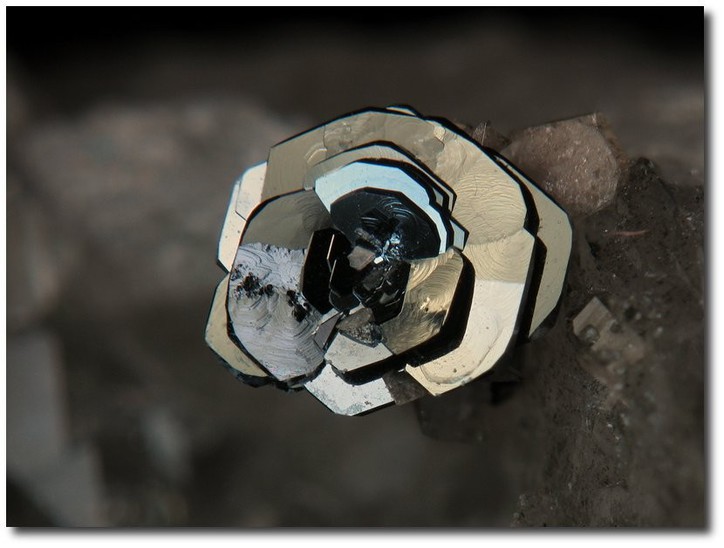
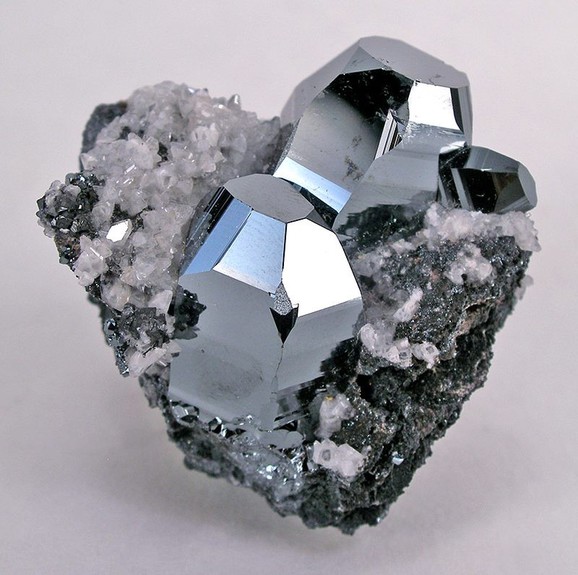
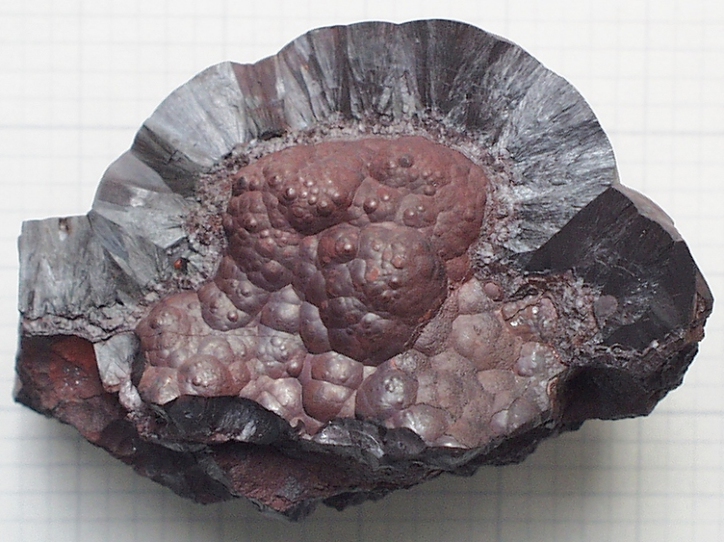
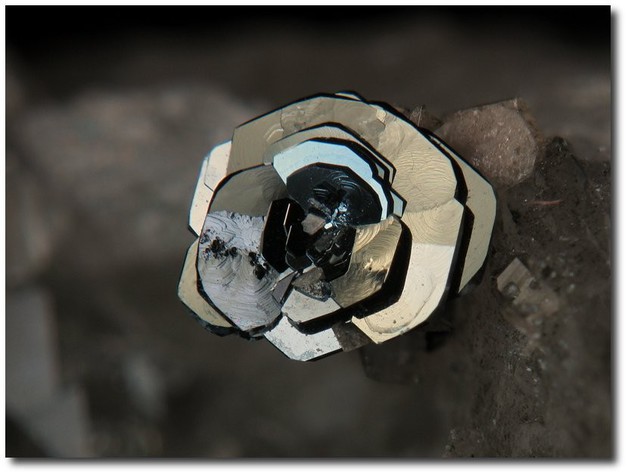
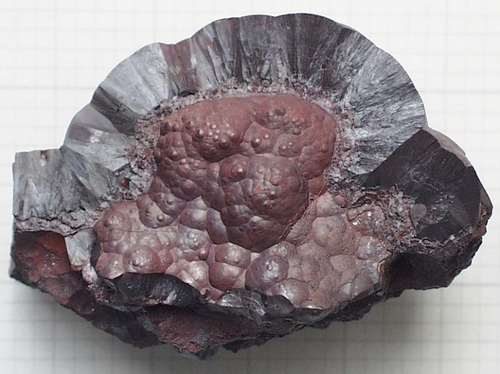


 symbol to view information about a locality.
The
symbol to view information about a locality.
The 





Saint-Christophe-en-Oisans, Grenoble, Isère, Auvergne-Rhône-Alpes, France